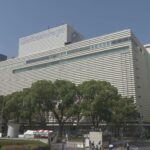According to JR Tokai, since around 4:09 PM today, the signal at Kiyosu Station on the Tokaido Line has remained stuck on a stop indication.
As a result, downbound service on the Tokaido Line between Nagoya and Gifu has been suspended.
JR Tokaido Line
The JR Tōkaidō Line is one of Japan’s most important and busiest railway lines, connecting Tokyo, Nagoya, Kyoto, and Osaka. Opened in 1872 as Japan’s first railway, it played a key role in the country’s modernization and remains a vital transport route today. The line is also part of the original Tōkaidō route, a historic highway from the Edo period that linked Edo (Tokyo) with Kyoto.
Nagoya
Nagoya is a major city in Japan’s Chubu region, known for its rich history and modern industrial significance. It was a key castle town during the Edo period, home to the powerful Owari Tokugawa clan, and today is famous for landmarks like Nagoya Castle and the Atsuta Shrine, one of Japan’s most important Shinto sites. The city is also a hub for automotive and manufacturing industries, housing companies like Toyota.
Gifu
Gifu is a historic city in central Japan, known for its rich cultural heritage and natural beauty. It was a significant center during the Sengoku period (15th–16th centuries) and is famous for Gifu Castle, which was once ruled by the warlord Oda Nobunaga. Today, the city is renowned for traditional cormorant fishing (ukai) on the Nagara River and its scenic views of Mount Kinka.
Kiyosu Station
Kiyosu Station is a railway station located in Kiyosu City, Aichi Prefecture, Japan, operated by Central Japan Railway Company (JR Central). It opened in 1904 as part of the Tokaido Main Line and serves as an important local transit point. The station is near historical sites related to Oda Nobunaga, a famous feudal lord, reflecting the area’s rich samurai heritage.
Tokaido Line
The Tokaido Line is Japan’s busiest and most important railway line, connecting Tokyo and Osaka. Opened in 1889, it was the country’s first major railway and played a key role in Japan’s modernization and economic growth. Today, it includes the high-speed Tokaido Shinkansen, which revolutionized rail travel when it launched in 1964 as the world’s first bullet train.






